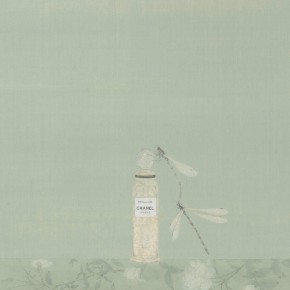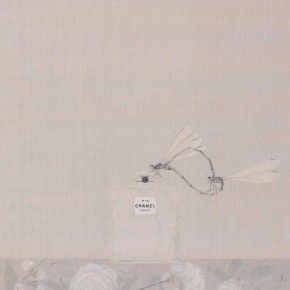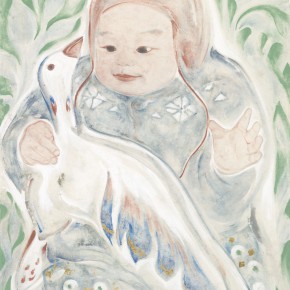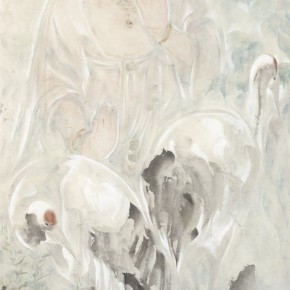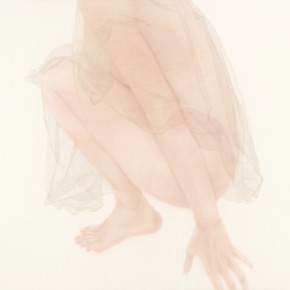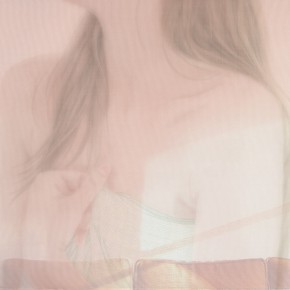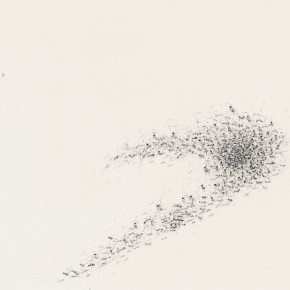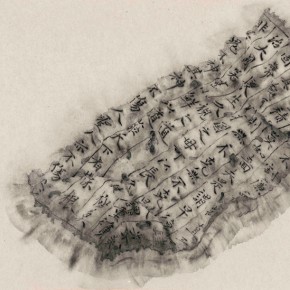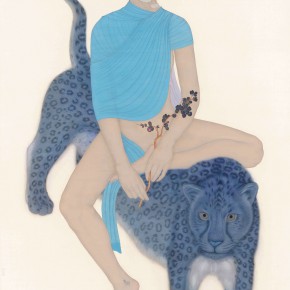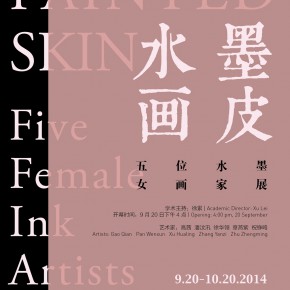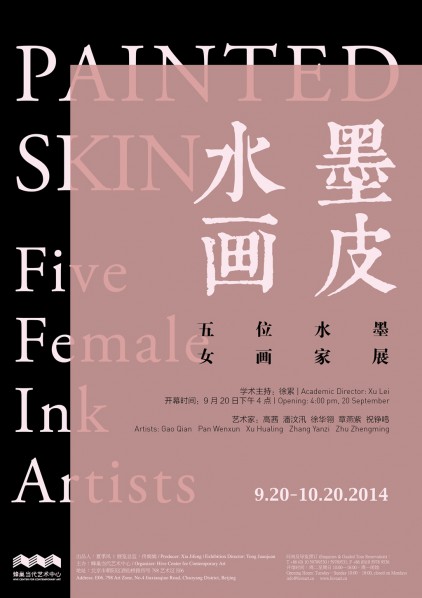
Hive Center for Contemporary Art is pleased to present “Painted Skin”, a group exhibition featuring recent works by five female ink artists and it will open at 4:00 pm on September 20, 2014. Well-known artist Xu Lei serves as the academic director of the exhibition, and the exhibition will continue to October 20.
Compared with the Western female art based on fierce resistance to males from a critical perspective, Chinese female art is calm and gentle because of the warm and humid Oriental cultural source. Both the Western view of the body and the Eastern natural view reveal the maternal body figure on the surface of attractive images. But it is undeniable that “he” and “she” see a different body: men are usually ambitious, extrovert and tough, while women have a characteristic of self-reflection which leads to the secret or illusion of the ghost. If this is the original type of human structure, recurring with the similarities and differences between the two genders is in order to illustrate that there are more than one path to creation, unlocking the two paths that are entangled together, to display the intersections of the two paths, through which is the reflection of the “sense and sensibility” in the mode of desire.
The five female painters in the exhibition are women, and also engaged in ink painting and traditional Chinese Gong-bi painting, so that we can observe their subjective consciousness from the aesthetic position of the Chinese model, how do they drift through traditional topography, individually planting a seed in an uncultivated land, so that their images can be regarded as a new experience of the ancient garden of traditional Chinese painting. On the one hand, the new experience can be regarded as the result of a traditional painting type and on the other hand it is also the unique testimony of Chinese women today. They all stand on the terrain of subjective consciousness, from the perspective of cultural creation, to explore the object-relationship travel.
Xu Hualing’s works are centered on the “main body” of the body. If the girl is swollen in her early work this reveals her infatuation for hurt, representing the cruelty of youth, her later works are “Nora”-style leaving, becoming the escape for the body. In Xu Hualing’s works, although “body” or “cloth” affirms the female cognition of gender, the result of self-harm or fragmentation exposes the female painter’s motivation of elimination of the main body. Zhu Zhengming also shapes the “body”, but her “body” is different from Xu Hualing’s. Obviously, the figures are not the bodies with a natural attribute. “They” experience an indescribable adventure, or abnormal action, or abnormal situation, and even the character herself is an abnormal woman. When the body serves as a repressed object, the female artist has no guilt to become a ghost, and “she” is a “non-self” human, dwelling in pine trees, interacting with animals, it is a metaphor. Since the knowledge and technology of modern civilization promote the medical and psychological development, the metaphor of sickness has spread in the body of literature and art. Zhang Yanzi’s ink innovation is unprecedented in this regard. She uses syringes, capsules, stethoscopes, scalpels in her paintings, and these symbols replace the knowledge of traditional motifs such as plum, orchid, bamboo and chrysanthemum, then the physical and mental practice is transformed into the repairing of the body, in this process, the traditional painting discipline and audience’s habit of appreciation are both seriously influenced. By contrast, Gao Qian’s is a more gentle “female temperature”, distinctly revealing a traditional concept of female temperament. Her works are like many crime scenes, all items make up a chain of evidence, pointing to an absent body. Yes, it is a body. The body is so addicted to a moment of pleasure that it almost suffers the “fetishism”. The painter worships in the temple of art history, to express her admiration for classic images, but it doesn’t satisfy her, often appearing with the impulse to alternate a role, through fantasy to express the object. For Pan Wenxun’s work, the women’s bodies are created with the aid of the image of the Goddess of Mercy, to promote the charity of maternity, which is also a method that is in line with traditional aesthetics. Emphasizing the self-actualization painting ethics which are important for Pan, otherwise nothing can explain that faith helps her keep the religious subjects of not lying in the time of art is keen to the performance of “malignity”. A painting is based on a fine base, only meditation is the method for practice, finding your own shadow from the appearance, meanwhile leading everyone towards an escape from the pain.
In this era, the new understanding of Chinese painting is obviously not the issue of subtle brush and ink. Painting is expressed by means of a text and knowledge system, which should be the usual practice for Chinese intellectuals, and it is an advantage for artistic narration that recurs today, while the key is how to respond to and explain the renovation of words, system, and structure. For the practice of five female artists, they are from a female perspective – such as “measuring vessel”, testing “fu, bi and xing” in traditional aesthetics, how to show a new “face”. In the past painting was treated as a “painting” skin, the trace on the paper is a “painting”, while today, the female artists directly claim that it is a “painted skin”, together with their flesh and thoughts, providing a disguise for an attitude to life, so we will think of somebody seeing things, and the scenes bring back memories, until they find their secret.
About the exhibition
Artists: Gao Qian, Pan Wenxun, Xu Hualing, Zhang Yanzi, Zhu Zhengming
Academic Director: Xu Lei
Opening Time: at 16:00 on September 20, 2014
Duration: September 20 - October 20, 2014
Venue: Hive Center for Contemporary Art
Courtesy of the artists and Hive Center for Contemporary Art, translated by Chen Peihua and edited by Sue/CAFA ART INFO.
For further information please visit www.hiveart.cn.


